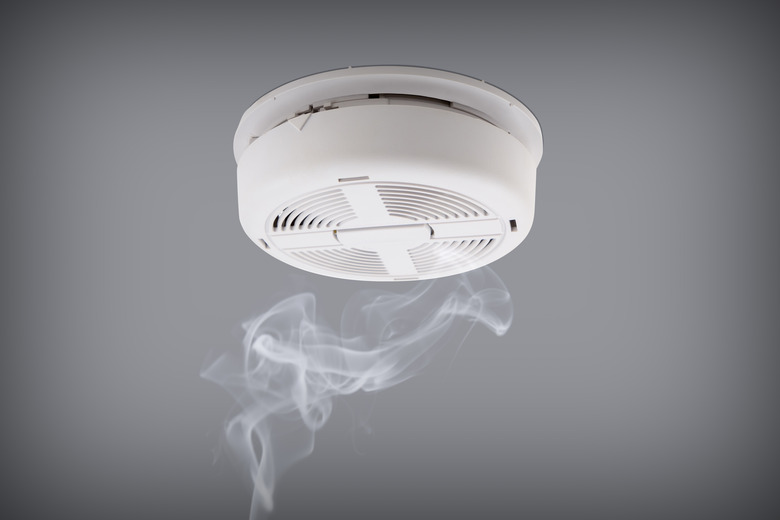Smoke Detector Vs. Heat Detector
Though smoke detectors and heat detectors perform different functions, both can save lives during a fire. Smoke detectors are a more common fixture in homes, but heat detectors have several advantages. Used together, both types of detectors provide extra warning for inhabitants of burning buildings.
Smoke Detector Types
Smoke detectors incorporate two types of technology — ionization and electric — both of which often are combined for optimum protection. In ionization smoke detectors, a chamber contains two plates that generate an electric current. If smoke interrupts that current, an alarm sounds. Photoelectric smoke detectors incorporate a light beam that shines into a receptor inside the devices. If smoke interrupts the beam in any way, the alarm sounds.
Smoke Detector Pros and Cons
Ionization detectors tend to respond more rapidly in cases of high flames, while photoelectric detectors react best to long, smoldering fires. Because of these strengths and weaknesses, some smoke alarms contain both photoelectric and ionization technology. While research shows either type of smoke alarm provides potentially life-saving warnings, you may want to install both types of detectors in your home. That way, no matter what caused the fire, you'll be alerted to it immediately.
Because many fires begin with billowing smoke before intense heat builds up, smoke detectors can sound the alarm before heat detectors activate.
Heat Detector Types
Heat detectors use two main types of technology: thermocouple and electro-pneumatic. Both detect changes in temperature in the area surrounding the alarms. Like smoke detectors, heat detectors include battery-operated and hard-wired varieties or combine both technologies. One type relies on a mechanical triggering apparatus without requiring batteries or electricity.
Heat Detector Pros and Cons
Heat detectors function best in fires that involve high flames, intense heat and little initial smoke. Heat detectors also provide a more reliable fire detection device in dusty or dirty environments in which false alarms can be triggered on smoke detectors. They are also typically used to trigger sprinkler systems due to their low incidence of false alarms in comparison to smoke detectors.
Heat detectors, however, fall short in fires involving heavy smoke but little initial heat, such as in the case of damp fires or smoldering fires.
Heat and Smoke Detector Installation
Install heat detectors in areas posing a higher likelihood of high flames and intense heat, such as in garages or sheds where fuels and other flammable chemicals may be stored. Heat detectors also should be installed in high-ceiling areas where smoke may not trigger smoke alarms.
Smoke detectors work best in areas in which smoky fires would occur, such as near wood and paper storage. Place smoke detectors on every level of a dwelling or building, in hallways and corridors outside of all sleeping areas and in all bedrooms. Install the devices in the center of ceilings or on walls 6 to 12 inches below the ceiling for best results.
Do not install a smoke detector directly over a stove, where it may be easily set off by normal cooking smoke. Also avoid placing it in front of a vent or drafty area, where smoke may be blown away from it.
